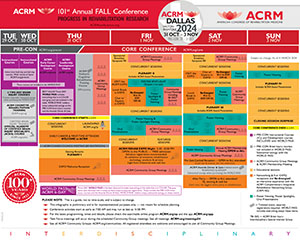Athlete Development & Sports Rehabilitation
Lifestyle Medicine
The Prevalence of Hamstring Muscle Tightness and Its Associated Factors Among Male Young Adults
Saturday, November 2, 2024
12:00 PM - 12:15 PM
Location: Station 2: ROOM: POSTERLAND / Trinity Poster / Exhibit Hall REGION: Tower Lobby Level >>>

Ramzi A. Alajam, n/a
Assistant professor
Jazan University, Saudi Arabia
Jazan, Jizan, Saudi Arabia
Presenting Author(s)
Research Objectives: to investigate the prevalence of hamstring tightness and to determine the associated factors of hamstring tightness among male young adults
Design: Cross-sectional study design
Setting: The study was conducted in the general community
Participants: This study involved 70 male participants
Interventions: not applicable
Main Outcome Measures: Hamstring tightness was measured by Active knee extension (AKE) test
Musculoskeletal Disorders of lower extremities and back (MSD) was measured the standardized Nordic musculoskeletal questionnaire (SNMQ)- lower extremities and back section.
Physical Activity (PA) Level was measured by the International Physical Activity Questionnaire (IPAQ)
Body mass index (BMI) was calculated by dividing weight in kilograms by height in meters squared.
Results: AKE of the dominant leg was not significantly correlated with IPAQ score (r = -0.128, p = 0.149), ODI score (r = 0.128, p = 0.168), MSD score (r = 0.133, p =0.139), and BMI (r = -0.128, p =0.149). In addition, AKE of the non-dominant leg was not significantly correlated with IPAQ score (r = -0.101, p = 0.207), ODI score (r = 0.026, p = 0.416), MSD score (r = 0.007, p =0.477), and BMI (r = -0.068, p = 0.261).
Conclusions: The results of the current study showed that high prevalence of hamstring muscle tightness among male young adults. However. Increase in hamstring muscle tightness was not associated with low physical activity, incidence of lower back pain, the number of lower extremities injury, and increase in body mass index.
Author(s) Disclosures: I declare no conflicts of interest
Design: Cross-sectional study design
Setting: The study was conducted in the general community
Participants: This study involved 70 male participants
Interventions: not applicable
Main Outcome Measures: Hamstring tightness was measured by Active knee extension (AKE) test
Musculoskeletal Disorders of lower extremities and back (MSD) was measured the standardized Nordic musculoskeletal questionnaire (SNMQ)- lower extremities and back section.
Physical Activity (PA) Level was measured by the International Physical Activity Questionnaire (IPAQ)
Body mass index (BMI) was calculated by dividing weight in kilograms by height in meters squared.
Results: AKE of the dominant leg was not significantly correlated with IPAQ score (r = -0.128, p = 0.149), ODI score (r = 0.128, p = 0.168), MSD score (r = 0.133, p =0.139), and BMI (r = -0.128, p =0.149). In addition, AKE of the non-dominant leg was not significantly correlated with IPAQ score (r = -0.101, p = 0.207), ODI score (r = 0.026, p = 0.416), MSD score (r = 0.007, p =0.477), and BMI (r = -0.068, p = 0.261).
Conclusions: The results of the current study showed that high prevalence of hamstring muscle tightness among male young adults. However. Increase in hamstring muscle tightness was not associated with low physical activity, incidence of lower back pain, the number of lower extremities injury, and increase in body mass index.
Author(s) Disclosures: I declare no conflicts of interest
Learning Objectives:
- Upon completion, participant will be able to understand the prevalence of hamstring tightness among male young adults.
- Upon completion, participant will be able to understand the associated factors of increasing the risk of hamstring muscle tightness among male young adults.
- Upon completion, participant will be able to understand how to prevent the risk of hamstring muscle tightness among male young adults.

.jpg)
.jpg)
.jpg)
